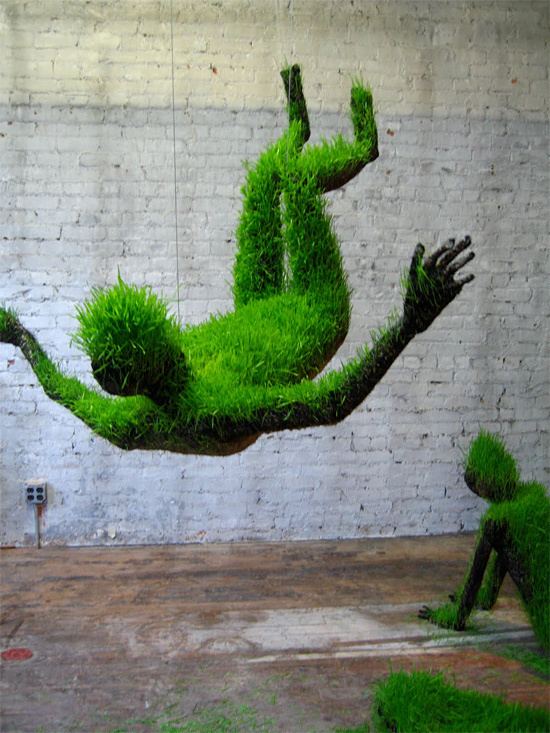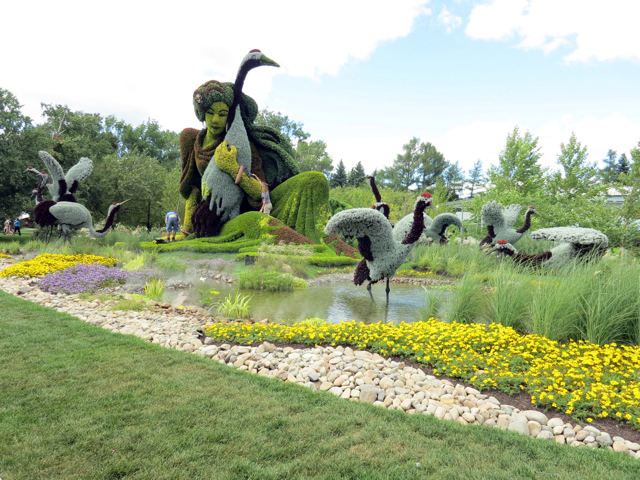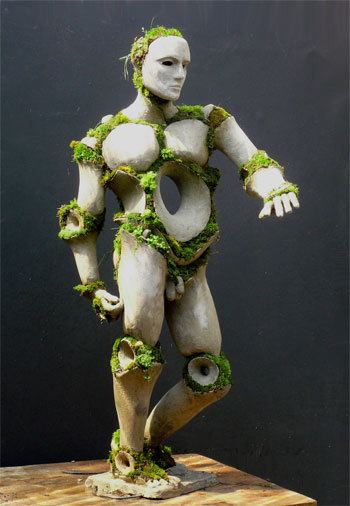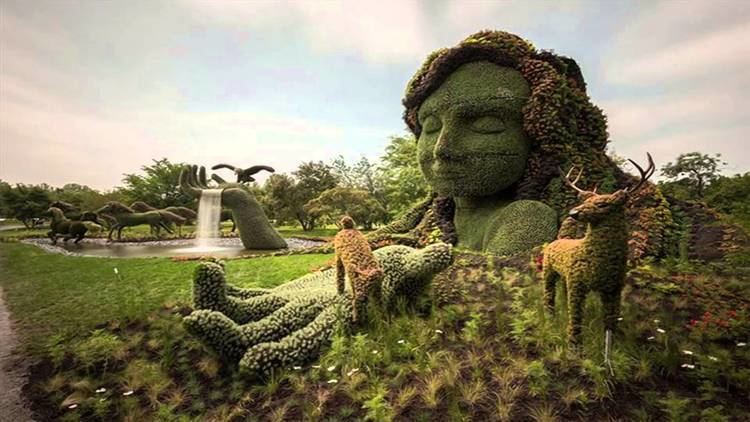 | ||
Wang deshun living sculpture
Living sculpture is any type of sculpture that is created with living, growing grasses, vines, plants or trees. It can be functional and/or ornamental. There are several different types of living sculpture techniques, including topiary (prune plants or train them over frames), sod works (create sculptures using soil and grass or moss), tree shaping (growing designs with living trees) and mowing and crop art (create patterns or pictures with plants or in lawns). Most living sculpture technique requires horticultural skills, such as grafting or pruning, to create the art.
Contents
- Wang deshun living sculpture
- History
- Topiary
- Bonsai
- Turf and sodworks
- Tree shaping
- Creative Mowing and Crop Art
- References

History

Sculptors through the ages have traditionally worked with non-living media such as clay, plaster, glass, bronze, or even plastic. Although sculpting plants isn’t a new idea (bonsai or topiary have long historical traditions), its recent rediscovery by artists, horticulturalists, gardeners, and young people has given living sculpture an innovative popularity.

Living sculpture offers a highly appealing blend of art and science. It’s a creative process that gives the sculptor a chance to bring their own unique vision to life (literally!) Creating a living sculpture is also a collaborative process that can bring artistic minds, logistical minds, and scientific minds together. As a team project, creating a living sculpture can be about more than just art or science. A team collaborating to design and build a living sculpture can learn a lot about themselves, each other, and what partnerships are all about - while making a functional and/or ornamental public sculpture in their community.
Topiary

One of the older and more familiar kinds of living sculpture, topiary is the art of growing dense, leafy plants and pruning them into a form, or training them over a frame, to create a three-dimensional object. It relies on pruning and training to give shape to an existing plant. It also can involve training a plant to fill in a form.

Topiary is one type of living sculpture that has gone in and out of favor through the ages. A few historical highlights of its importance and use:

Bonsai
Bonsai is the art of aesthetic miniaturization of trees, or of developing woody or semi-woody plants shaped as trees, by growing them in containers. Cultivation includes techniques for shaping, watering, and repotting in various styles of containers.
Turf and sodworks
Turf- or sod-works are created from grass or moss and soil. This type of art has roots in the Land Art movement (also known as the Earthworks or Earth Art movement) that emerged in the late 1960s and early 1970s. During this period, landscape and the work of art began to be viewed as linked. Sculptures were not just placed in the landscape; rather the landscape became the very means of their creation. These works often existed in the open, located well away from communities, and were left to change under natural conditions. Many of the first works were created in the deserts of Nevada, Utah, New Mexico, and Arizona. They did not, or were not meant to last, and now exist only as recordings or photos.
Works made from the earth are changing the way in which people view art, and often are used to promote environmental awareness. These works may be created on waste sites, and may draw attention to land reclamation and urban restoration efforts. Recent earth artists have worked with soil, sod, or moss to create forms that may be intimate and small, or large and multi-acre. They may be cut out of the earth, or formed with soil. They may give a nod to the past, or they may be cutting edge and contemporary in design. Some examples include labyrinths and mazes, animal and human forms, geometric shapes, and furniture.
Tree shaping
Chairs, ladders and other shapes made from living trees are some examples of tree shaping. Some types of tree shaping involve horticultural practices such as weaving, grafting, training, and/or shaping young, living trees into desired shapes.
Creative Mowing and Crop Art
Crop artists plan in advance on paper, and often work with farmers, special equipment, and a diversity of crops to create multi-acre masterpieces that are viewed from the air and are captured via photographs. They draw on a variety of impressionist, surrealist, and modernist roots in their designs, and some are downright quirky: [1]. Stan Herd is a renowned Crop artist.
